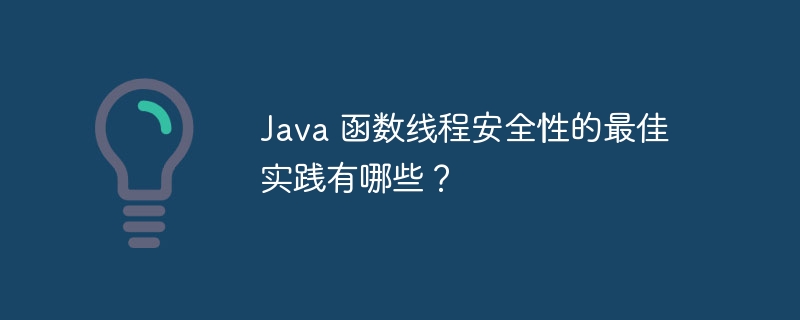高效数据库搜索的Java技术解决方案探讨与实践
引言:
随着数据量的不断增加,数据库搜索的效率成为了重要的关注点。本文将探讨基于Java的高效数据库搜索解决方案,并提供具体的代码示例。
一、使用数据库索引
数据库索引是提高搜索效率的关键因素之一。索引可以加速数据的查找速度,尤其是在大数据量的情况下。在Java中,可以使用JDBC与数据库建立连接,然后利用SQL语句创建索引。以下是一个示例代码:
import java.sql.*;
public class DatabaseSearch {
public static void main(String[] args) {
try {
// 建立数据库连接
Connection connection = DriverManager.getConnection("jdbc:mysql://localhost:3306/database", "username", "password");
// 创建索引
Statement statement = connection.createStatement();
String createIndexSQL = "CREATE INDEX idx_name ON students (name)";
statement.executeUpdate(createIndexSQL);
// 执行搜索
String searchSQL = "SELECT * FROM students WHERE name = 'Tom'";
ResultSet resultSet = statement.executeQuery(searchSQL);
// 处理搜索结果
while (resultSet.next()) {
String name = resultSet.getString("name");
int age = resultSet.getInt("age");
System.out.println("Name: " + name + ", Age: " + age);
}
// 关闭连接
statement.close();
connection.close();
} catch (Exception e) {
e.printStackTrace();
}
}
}二、使用缓存技术
在数据库搜索中,经常会出现相同的查询请求。使用缓存可以避免重复查询,提高搜索效率。Java中有多种缓存技术可以使用,如Ehcache、Redis等。以下是一个示例代码,演示如何使用Ehcache进行缓存:
import net.sf.ehcache.Cache;
import net.sf.ehcache.CacheManager;
import net.sf.ehcache.Element;
public class DatabaseSearch {
private static Cache cache;
public static void main(String[] args) {
// 初始化缓存
CacheManager cacheManager = CacheManager.getInstance();
cache = cacheManager.getCache("studentsCache");
// 判断缓存中是否存在搜索结果
String searchKey = "Tom";
Element resultElement = cache.get(searchKey);
if (resultElement != null) {
// 缓存中存在结果
System.out.println("Result from cache:");
SearchResult result = (SearchResult) resultElement.getObjectValue();
System.out.println("Name: " + result.getName() + ", Age: " + result.getAge());
} else {
// 缓存中不存在结果,执行数据库搜索
SearchResult result = databaseSearch(searchKey);
// 将搜索结果存入缓存
cache.put(new Element(searchKey, result));
System.out.println("Result from database:");
System.out.println("Name: " + result.getName() + ", Age: " + result.getAge());
}
}
// 模拟数据库搜索
private static SearchResult databaseSearch(String searchKey) {
// 执行数据库搜索操作
return new SearchResult("Tom", 20);
}
}
class SearchResult {
private String name;
private int age;
public SearchResult(String name, int age) {
this.name = name;
this.age = age;
}
public String getName() {
return name;
}
public int getAge() {
return age;
}
}三、使用并行处理
并行处理是提高搜索效率的另一种方式。在Java中可以使用多线程或者线程池来实现并行处理。以下是一个示例代码,演示如何使用线程池进行并行处理:
import java.util.concurrent.ExecutorService;
import java.util.concurrent.Executors;
import java.util.concurrent.Future;
public class DatabaseSearch {
public static void main(String[] args) {
// 创建线程池
ExecutorService executorService = Executors.newFixedThreadPool(5);
// 提交搜索任务
String searchKey = "Tom";
Future<SearchResult> future = executorService.submit(() -> databaseSearch(searchKey));
try {
// 等待搜索结果
SearchResult result = future.get();
// 处理搜索结果
System.out.println("Name: " + result.getName() + ", Age: " + result.getAge());
} catch (Exception e) {
e.printStackTrace();
}
// 关闭线程池
executorService.shutdown();
}
// 模拟数据库搜索
private static SearchResult databaseSearch(String searchKey) {
// 执行数据库搜索操作
return new SearchResult("Tom", 20);
}
}
class SearchResult {
private String name;
private int age;
public SearchResult(String name, int age) {
this.name = name;
this.age = age;
}
public String getName() {
return name;
}
public int getAge() {
return age;
}
}结论:
本文探讨了基于Java的高效数据库搜索解决方案,并提供了具体的代码示例。通过使用数据库索引、缓存技术和并行处理技术,可以大幅提高数据库搜索的效率。开发人员可以根据实际需求选择合适的技术方案来优化数据库搜索操作。





